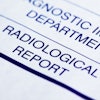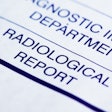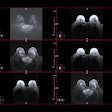
The ChatGPT chatbot may have both good and bad consequences in radiology, with potential for improving the interpretability of computer-aided detection (CAD) software but also for fabrication of scientific work, doctors in New York City suggest.
A team of experts led by Yiqiu Shen, PhD, of New York University (NYU), is encouraging caution as radiologists navigate decisions about using artificial intelligence (AI)-based technologies like ChatGPT. However, harnessing the power of the technology for clinical benefits holds great potential, the group wrote in an editorial published January 26 in Radiology.
"It is exciting to consider the possibilities of what ChatGPT and similar AI-based technologies have in store for the future. However, it makes it more challenging for journals to evaluate the scientific integrity of submitted manuscripts," the authors wrote. ChatGPT, an advanced chatbot, was launched by OpenAI late last year and has quickly become popular because it answers complex questions with human-quality responses.
One of the most notable cases of the potential use of the technology concerns the burdensome process of preauthorization for both referring and imaging practices. ChatGPT could simplify this workflow, according to the researchers.
The authors also noted that Dr. Cliff Stermer, a rheumatologist, demonstrated in a TikTok post how to use ChatGPT to compose a letter to a medical insurance company to justify why a patient with systemic sclerosis should be approved for an echocardiogram. ChatGPT produced a complete letter that provided a clear explanation of the examination, according to the team. The post has been viewed more than 145,000 times.
@tiktokrheumdok #chatgpt #AI #medicine #medicina ♬ original sound - Clifford Stermer, MD
ChatGPT may also improve the interpretability of CAD software. Modern CAD systems often rely on deep-learning models that are challenging to interpret, the team wrote. By incorporating ChatGPT into a CAD system, clinicians can ask open-ended questions about specific patients or images, allowing for an interactive experience.
"Clinicians can use AI's knowledge to gain data-backed insights about existing guidelines and potentially discover new image-based biomarkers," the authors wrote.
Despite its strengths, ChatGPT has several limitations, and significant concerns have been raised in the academic community regarding the potential for outright fabrication of scientific work by ChatGPT, Shen and colleagues wrote.
In a study last December published on bioRxiv.org, for instance, a team at Northwestern University in Illinois used ChatGPT to generate new abstracts based on high-impact journal abstract samples. When blinded human reviewers were asked to identify the fabricated abstracts, they correctly identified 68% but incorrectly flagged 14% of real abstracts as fabricated, according to the research.
The data suggests that while peer reviewers will likely be able to identify the most egregious offenders, better-written or fabricated articles that undergo subsequent polishing may fool inexperienced peer reviewers, the authors wrote.
"Editors and reviewers need to be aware that the submission of an entirely fabricated article, substantiated by synthetic data, images, and incorrect or misattributed citations, is inevitable," they concluded.
Shen is a postdoctoral student at NYU's Center for Data Science, where the work originated. Co-authors at NYU included Drs. Laura Heacock, Beatriu Reig, and Linda Moy; and Drs. Jonathan Elias, Keith Hentel, and George Shih of Weill Cornell Medicine in New York City.



















